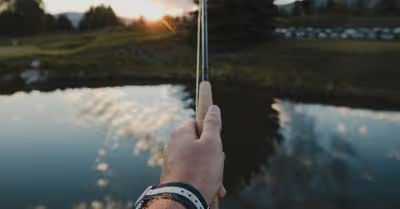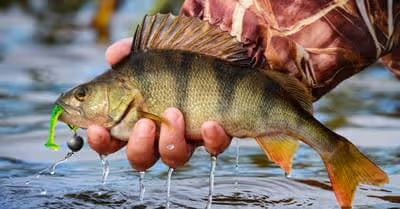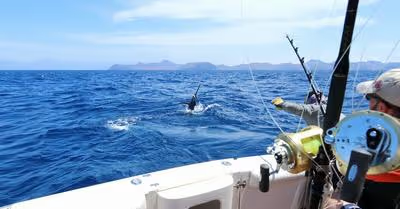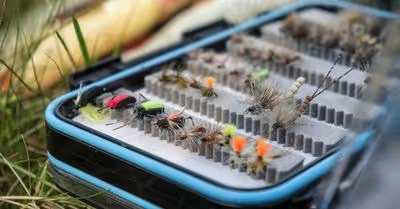Table of Contents
What is a Tube Bait?
Tube baits are a cylindrical hollow soft plastic tube with a closed rounded head and a tentacle- covered open end. From the definition, tube baits seem complicated, but they are simple gadgets that produce incredible results. These devices come in varying sizes.
A tube ranging from 3 to 4 inches in length is ideal for your fishing tasks. The perfect pick should be made of soft supple and soft plastic to act as a life object capable of tricking fish. When choosing tube bait, it's also vital to consider the color and excellent craftsmanship.
Although these items are available in many colors, some are more preferred-for example, natural hues such as white, smoke, brown, and green offer better results.
Rigging Tube Baits
It's challenging to rig bait that will deliver the desired slow spiral. Rigging tube bait needs an ideal balance of a variety of factors. You must rig the bait on a jig head or a hook that is perfect in size. You should also ensure it is correctly hooked.
Remember, bends and kinks can affect the rigging process. Consider using wide-gapped hooks; they are ideal for tubes. The right tube hook should accommodate the hook perfectly. This is vital to enable the bait to gallop straight on the hook for better results.
When scouting for the ideal jig head or hook, line it up against the tube. If its bend is approximately 1/4 inch from the skirt, then it's a perfect match. If possible, draw a line using a felt pen to get an exact approximation.
When the hook is too small, it'll make the lure to kink. On the other hand, if it's too large, it'll affect the action. In both cases, the bass may ignore the poorly rigged tube. Let's look at some of the main methods of rigging tube bait.
Texas Rig
The Texas rigging style allows the tube to mimic the appearance of a variety of forage. In this case, you can toss the tube anywhere without any fears of having it getting hung up.
The procedure of rigging tube bait in the Texas-style is nearly similar to what you'll do when rigging a real worm. You start by entering the hook point over the head of the tube. This should be around 1/4 inches between the head of the bait and the point where the bend/curve starts. Then move the hook sideward to the point the hook leaves the body of the bait.
Ensure the eyelet is not buried inside the head. It should be outside the baits head. At this point, you need to turn the hook around such that the hook's point faces the bait's body. Locate and mark the point at which the tube's body meets with the shaft of the hook. You can do this by laying one of your fingers beside the tube. This is the point where you'll penetrate the hook point.
Insert the hook via hook point by bending the bait. The hook point should be at an angle of approximately 90 degrees. Pinch the bait to push it forward. The hook point should be even to avoid grasping weeds or any junk when in action.
You should not push the surface of the bait or the upper part entirely through hook point, especially if you're fishing in dense cover. The best option is to embed it to make it weedless. Ensure the hook's point gets inside the plastic or bass' jaw swiftly.
The Mustad Bigmouth tube hook is preferred if you're fishing in thin covers. In this case, you should push the hook's point through the body completely. This will make the point to lie over the surfaces of the tube due to its shape.
If your fishing cover is weighty, it's advisable to position the hook point under the skin of the tube. Your bait has a similar appearance to an actual worm; therefore, handle it in the same fashion. Pull the hook's point and the skin of the tube apart. The point needs to be buried under the skin of the bait as you push back the skin over it.
The Texas rig is ideal for specific targets such as flooded bushes, shallow vegetation, etc. Its weight pushes against the soft plastic lure to offer exceptional results.
Stupid Rig
A stupid rig is yet another simple way of rigging your tube bait. Most anglers concur this rigging method is one of the best since it lets the bait move naturally. This style is also perfect when you're using a downrigger or trolling; the tube won't fall even if you're bottom fishing.
Start by inserting the hook point on the hollow head of the tube. Move the hook until it gets to the 1/4 inches mark from the nose of the bait and let it exit. This is the same spot where the hook point emerges when you're doing the Texas rig.
Pull the hook point all the way to the point where the jig head stops it. Then, turn the hook around towards the bait's head. Poke the jig head's eye to the other side of the tube. This enables you to tie the line on the eyelet.
Finally, insert the hook point until it emerges on the other side of the tube. You'll have to skin the hook such that its tip gets to the wall of the tube, making the hook's point even.
Drop Shot
Drop shot rig is commonly used for various fishing situations. It's ideal if you're fishing shallow, deep, with live bait, soft plastics, around cover, panfish, for bass or large saltwater fish.
Start by tying the hook, leaving some extra line after making a knot to tie the line to a sinker. When joining the hook to the line, leave 12 inches or more additional line. This will guarantee you can keep your bait 1 foot or more above the bottom.
Besides, you'll have some extra 12 inches or more of the line that you can tie to the sinker. The hook-up ratio is sufficient even if fish commit to eating it.
Carolina Rig
The Carolina rig is a simple rig that is a darling for many anglers and ideal for all seasons. This rig can be made via a combination of several elements allowing anglers to be creative.
Most individuals use plastic baits and lures such as flukes, leeches, grubs, lizards, and crawdads. Other anglers prefer using live baits such as shad, leeches, minnows, and night crawlers. In any case, the size of the hook should match the bait. Use large baits for large hooks and vice versa. The size of the hook depends on the fish you're targeting.
Most individuals prefer a bullet weight as the sinker in the case of Carolina rig. You may also include a heavier sinker, especially when fishing in fast-moving currents or if you want the bait to sink faster. The line should be invisible to fish. Most fishers use heavy pound test fishing long.
Carolina rigs are best for open-water bodies where anglers have to cover vast waters quickly. A Carolina rig features a heavy rig (1/2 -1 ounce) attached to a soft plastic lure straggling behind a leader line. This set up is effective to drag fast along the waters and trigger strikes from bottom-hugging bass. Anglers can avail the lure to limitless aggressive bass by moving the rig swiftly along the wide-open spaces.
Rigging with an Internal Tube Jig
The simplest and the best way to rig a tube bait is by an internal tube jig. In this case, the tube jig head will sit immediately below the hook eye, having a bulbous weight. The weight offers a natural fall on the descent beside a genuine springing action when retrieved.
Wet the jig head and slide it up the tube until the eyelet gets to the top of the tube. Push the linetie via the plastic to expose the eyelet. Then, locate the hook point and push it via the bottom of the tube to expose it. If you've rigged it correctly, the tube will be straight. The hook eye will be protruding from the top of the tube. The hook point will be emerging from the bottom of the tube.
This rig is ideal for fishing tube baits offshore or in open waters. You can drag, hop, or swim it. This type allows you to use the lightest weight as you maintain the bottom contact. If you're often caught up, use a tube jig that has a weed guard or move a weight downward.
Final Word
Fishing is a leisure activity to some individuals to others; it's a career and a business. If you want to snag large fish and outsmart fellow fishers, you have to use the right rig. The various methods of rigging tube baits are an excellent step in scaling your fishing tactics.
Recent Articles
















